|
Introduction
"Seems it never rains
in southern California
Seems I've often heard that kind of talk before
It never rains in California, but girl don't they warn ya
It pours, man it pours"
(It Never Rains in California
Song lyrics by Albert Hammond)
Southern
California is a land of water extremes - some years bring 15 inches
of rain; others, 40 or more. There are few navigable waterways, and
the rainy season is in the winter and the opposite of the growing
season. Explorers noticed this immediately. The right to water, how
it was brought to the people, and the responsibilities of water companies
changed quickly over a period of only 150 years.
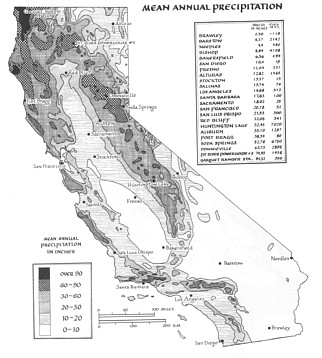 From National
Weather Service Data
From National
Weather Service Data
Hundley, The Great Thirst, p. 14
|
|
"'We
had no water here except what ... [was] carried,' complained Fray
Juan Crespi [in 1769 on a California expedition with Gaspar Portolá
], 'and the animals, though they had good pasture, went without
drinking.'" (Hundley, The Great Thirst,
p. 32)
|
The
question of who the water belongs to has been an issue since indians
settled in Southern California. Water Rights changed over the years
as different needs were addressed.
Back
to Top
Back
to Top
Past,
Present, Future
Officials in the
Los Angeles area realized before 1900 that new sources of water, besides
the Los Angeles River, would be needed to supply residents over the
next 50 years. Over the next 100 years, water would flow to Southern
California from the Owens Valley by way of the Los
Angeles Aqueduct, from the Colorado River Basin by way of the
Colorado River Aqueduct,
and from Northern California by way of the State
Water Project. Ground water was pumped up during years of shortage.
Water from the ocean from desalinization plants is expensive, but
the next resource to be tapped.
|
Explosive
growth of the Los Angeles basin:
Year/People
1850 / 1,600
1860 / 4,300
1880 / 12,900
1890 / 50,000
1900 / 100,000
1910 / 500,000
2000 / 17,000,000
|
The Corner of San Vincente and Fairfax
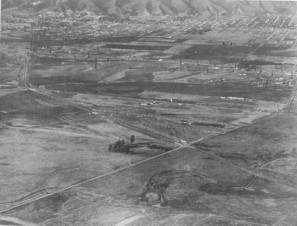 1922 1922 |
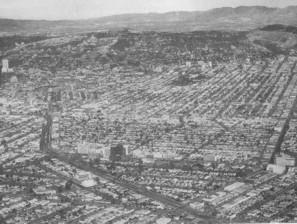 1966
UCLA Dept.
of Geographic Air Photo Archives 1966
UCLA Dept.
of Geographic Air Photo Archives
Hundley, The Great Thirst, pp. 234, 235
|
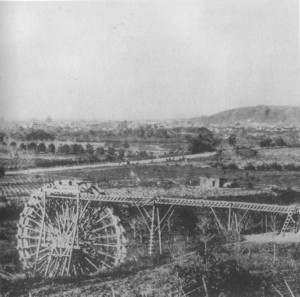 |
|
|
Water
wheel lifting water from the Los Angeles River
Security Pacific Historical Photograph Collection
Hundley,The Great Thirst, p. 125
|
|
Map
of California Water Sources
http://www.water.ca.gov/maps/
|
Back
to Top
So
What?
Southern California's never-ending quest for water has caused many
problems:
- Numerous lawsuits
- Environmental destruction
- Loss of lives
- Bitter feelings toward Southern California
- Billions of public dollars spent
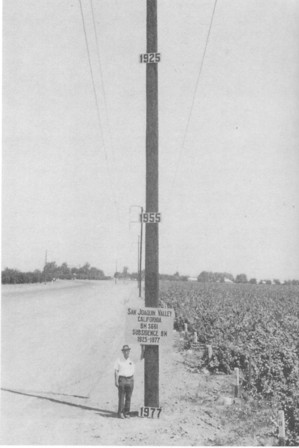
Depletion of ground
water in the San Joaquin Valley has caused the ground to sink
U.S. Geological Survey
Hundley, The Great Thirst, p. 428
Back
to Top
Southern
California's water responsibilities:
To share with those we take it from (Intrastate Compacts, Colorado
River Compact, The Mexican Water Treaty),
To the environment (California and Federal Endangered Species Acts),
To provide clean water (Clean Water Act of 1972),
To public trust (open waterways and bays),
To ourselves (California Environmental Quality Act),
To plan for the future and conserve.
|